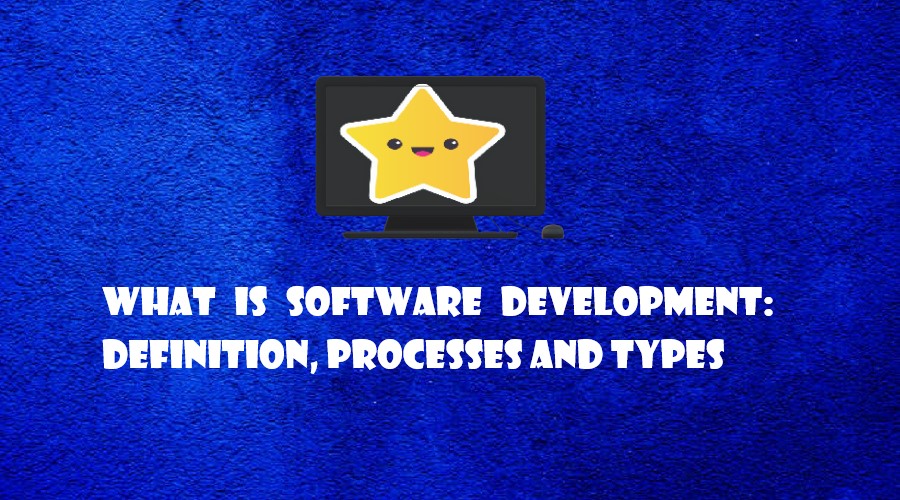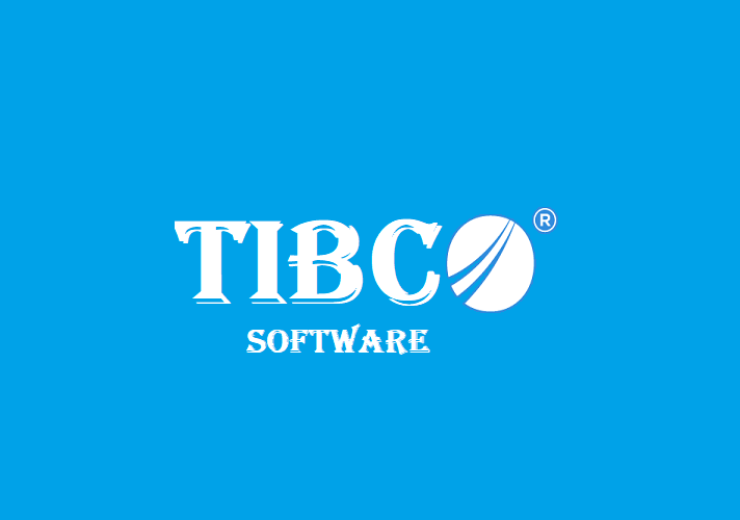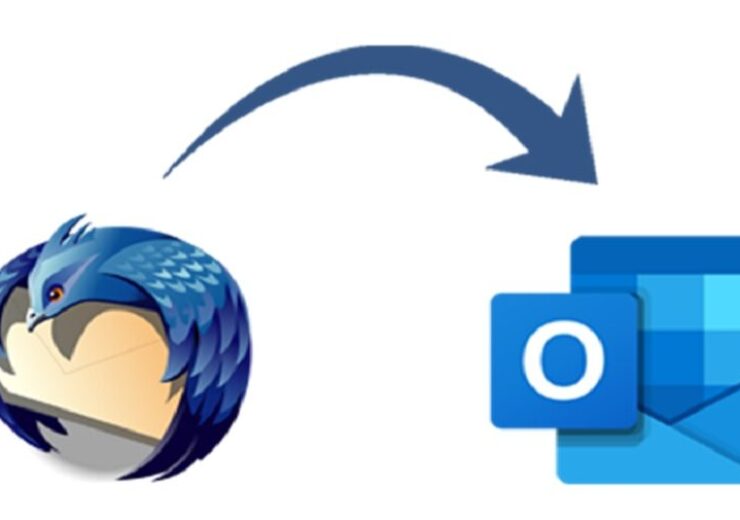What Is Software Development: Definition, Processes and Types

Software development is a set of procedures for programmers to construct computer applications. The software development life cycle phases are made up of this procedure. In the IT business, understanding the software development approach opens up many possibilities.
This post will go over what software development is, what different kinds of computer programs are, and what jobs employ the IT development process.
What Is the Definition of Software Development?
The process through which programmers create computer programs is known as software development. The Software Development Life Cycle is a way of developing products that meet technical specifications and user needs. It consists of numerous phases.
The SDLC establishes an exceptional international standard that software developers can utilize to create and improve their systems. It provides a well-defined process for the development teams to follow in creating, maintaining, and designing high-quality software.
The goal of the IT software development process is to develop high-quality solutions on schedule and within budget.
Major Development Life Cycle Steps
There are a few crucial stages to consider during the software development process. Let’s get started and learn more about those steps:
Identification
Identification is a stage of the process that primarily involves market research and brainstorming. A firm must conduct thorough market research before developing software to determine the product’s viability.
Programmers must determine what functions and services the program should offer for its intended users to get benefit and find it extremely valuable. This information can be obtained in various ways, including surveys and feedback from potential and present clients.
The IT teams and other various divisions within the company must also discuss the product’s strengths, flaws, and prospects. Software development methods start only when the product meets all of the criteria for success.
Requirement Analysis
The second phase of the software development life cycle is requirement analysis. To fulfill its objectives, stakeholders agree on the proposed product’s technical and user criteria and specifications. This second phase includes a clear definition of each component, the extent, development activities, and testing conditions to create a quality product.
Programming, users, QA testers, project managers are all involved in the requirement analysis step. This is also when programmers decide whether to use a waterfall or any other model for software development. The output of requirement analysis is documented in a Software Requirement Specification document, which teams can refer to during project execution.
Design
Design is the third stage of the software development process. Architects and developers write advanced technical specifications in this section to create software that meets the criteria. Risk levels, team composition, suitable technology, time, budget, project limits, approach, and architectural design will all be discussed by stakeholders.
The product’s architectural design, components, communication, front-end representation, and user flows are all specified in the Design Specification Document (DSD). Design serves as a template for developers and testers, lowering the likelihood of defects and delays in the final product.
Implementation and Development
The formulation and implementation of design parameters is the next step. Developers write code based on the product specs and needs agreed upon earlier in the process. Front-end developers design interfaces and back-ends following company policies and rules while database administrators enter essential data. The developers also put each other’s code to the test and review it.
Programmers deploy the product to an environment in the implementation stage once the coding is finished. This enables them to test a beta version of the application to ensure that it meets the performance criteria.
Testing
Before releasing the software to users, the testing phase inspects it for defects and ensures its functionality. Expert testers check the product’s functions at this step to ensure it meets the requirements outlined in the requirements analysis document.
Testers use exploratory testing to assess the performance of specific software components if they have prior knowledge of the software or if they have a test script. They send out alerts to developers when there are bugs in the code. If the faults are confirmed, the developers fix the program, and the analysts continue the process until the software is bug-free and functions as expected.
Deployment
The SDLC’s Deployment Phase includes the effort required to deploy the finished solution into the appropriate production environment. Including creating, installation, system operations, system administration, and end-user functionality guides. It would be best if you also designed a clear strategy for implementing a solution across the organization. The production implementation plan becomes even more crucial when distributing the system across many environments operated by various businesses.
Maintenance
The developers can release the program to clients after it is defect-free. After the production version of the software is released, the IT software development company forms a maintenance team to handle any difficulties that customers may have while using the product. If the problem is minor, maintenance can be done as a hotfix, but significant software problems necessitate an update.
Different Types of Software
Based on their use and application, software is divided into three categories. The most popular software categories are listed below.
Software for the System
System software, often known as operating system or OS, is the program that your computer uses to convert input commands into machine-readable language.
The operating system is in charge of a computer’s hardware.
Microsoft’s Windows OS, Apple’s Mac OS, and Ubuntu, a Linux-based operating system, are all examples of popular operating systems used on personal computers.
The Apache operating system is used to run web servers, while the UNIX operating system is used to develop proprietary systems.
Software for Applications
Most users use this application to do chores on their PCs and cell phones. Word processing apps, internet browsers, music players, photo editing tools, anti-virus software, and even software-as-a-service (SAS) solutions are famous examples.
Languages for Programming
This is the language in which software is written. Only programmers use it to construct programs. Java, C++, PHP, and Simlab are examples of programming languages.
Critical Characteristics of Efficient Software Development
Using software development to differentiate brands and obtain a competitive advantage necessitates knowledge of the methodologies and technologies that can speed up software deployment, quality, and efficacy.
Artificial intelligence (AI): AI is a technology that allows computers to mimic human decision-making and learning. Developers and businesses can use neural networks, machine learning, natural language processing, and cognitive capabilities to develop products and services that disrupt markets and put them in front of the competition.
IBM Watson provides application programming interfaces (APIs) that allow developers to connect to and utilize artificial intelligence capabilities as part of their applications. IBM Watson can also help you enhance your product specifications by detecting ambiguity, unclear actors, compound or adverse requirements, missing units or tolerances, incomplete requirements, any unspecific numbers.
Cloud-Native Development: It is a method of creating apps that use cloud settings. A cloud-native program comprises small microservices reusable components that may be used in any cloud environment. These microservices are commonly tied up in containers and serve as building blocks. Thanks to this architecture, cloud-native apps can take advantage of cloud environments to boost application performance, flexibility, and extensibility.
Cloud-Based Development: Software development companies, like IT companies, are looking to the cloud to better resource management and save expenses. In this approach, the cloud can be used as an integrated development environment (IDE) or development Platform as a quick, versatile, and cost-effective (PaaS).
Coding, design, integration, testing, and other development operations can be done in a cloud-based development environment. They can also provide APIs, microservices, DevOps, and other development services, tools, and expertise.
Blockchain: It is a secure, digitally linked ledger that reduces the cost and vulnerability that parties like banks, regulatory organizations, and other intermediaries bring to the table. Releasing money, speeding up operations, lowering transaction costs, etc., helps organizations transform.
For software developers, blockchain presents enormous potential. To change how organizations run, developers use distributed ledgers and open source Hyperledger technologies.
Low-Level Code: “Products and cloud services for application development that use visual, declarative methodologies instead of programming and are available to clients at low- or no-cost in terms of money and training,” according to Forrester. 4 In a nutshell, it’s a development method that eliminates the need for coding and allows non-coders or citizen developers to create or assist in the creation of applications more quickly and at a lesser cost.
Analytics: By 2023, there will be more than 800,000 job openings for data scientists, data developers, and data engineers. This shows how important it is for businesses to derive insight and value from the data stream.
To meet this demand, software makers include advanced analytics features into their products. Cloud-based services and APIs make it easier to manage data exploration, automate predictive analytics, and generate dashboards that provide fresh insights and help you make better decisions.
Model-Based Systems Engineering: Software modeling languages are used to do early prototype, simulation, and analysis of software designs for early validation in Model-Based Systems Engineering. MBSE’s building designs can assist you in analyzing and clarifying project requirements so that you can proceed quickly from design to implementation.
Mobile: Creating mobile apps with deep connections to data that improve and elevate user experiences is vital for software developers. “Deeply integrating digital customer data has a strong effect on how customers interact with brands,” according to Forrester.
Conclusion
SDLC shows what’s going on and where your development process might be improved. Like many other business processes, SDLC strives to examine and improve the software development process. From day-to-day coding to controlling production dates, it creates a scalable view of the project.




